Latinx Files: How going vegan helped strengthen cultural bonds

- Share via
Hey folks. Fidel here. Every so often, we’ll have a guest writer fill in for me. The idea is to have other people talk about their experiences, to highlight the diversity that exists within the Latinx community.
If you read the newsletter regularly, you know that we tend to close it out with an illustration. We call it “And now for something a little different...” because, well I still haven’t come up with a better name for it. This week, we’re going to try something a little different.
Fabiola Lara is a first-generation Chilean American illustrator, podcaster and YouTuber based in Philadelphia. She pitched us a series of illustrations on belonging, food and veganism. We loved the idea so much that we decided to make it this week’s main story.
Take it away, Fabiola!
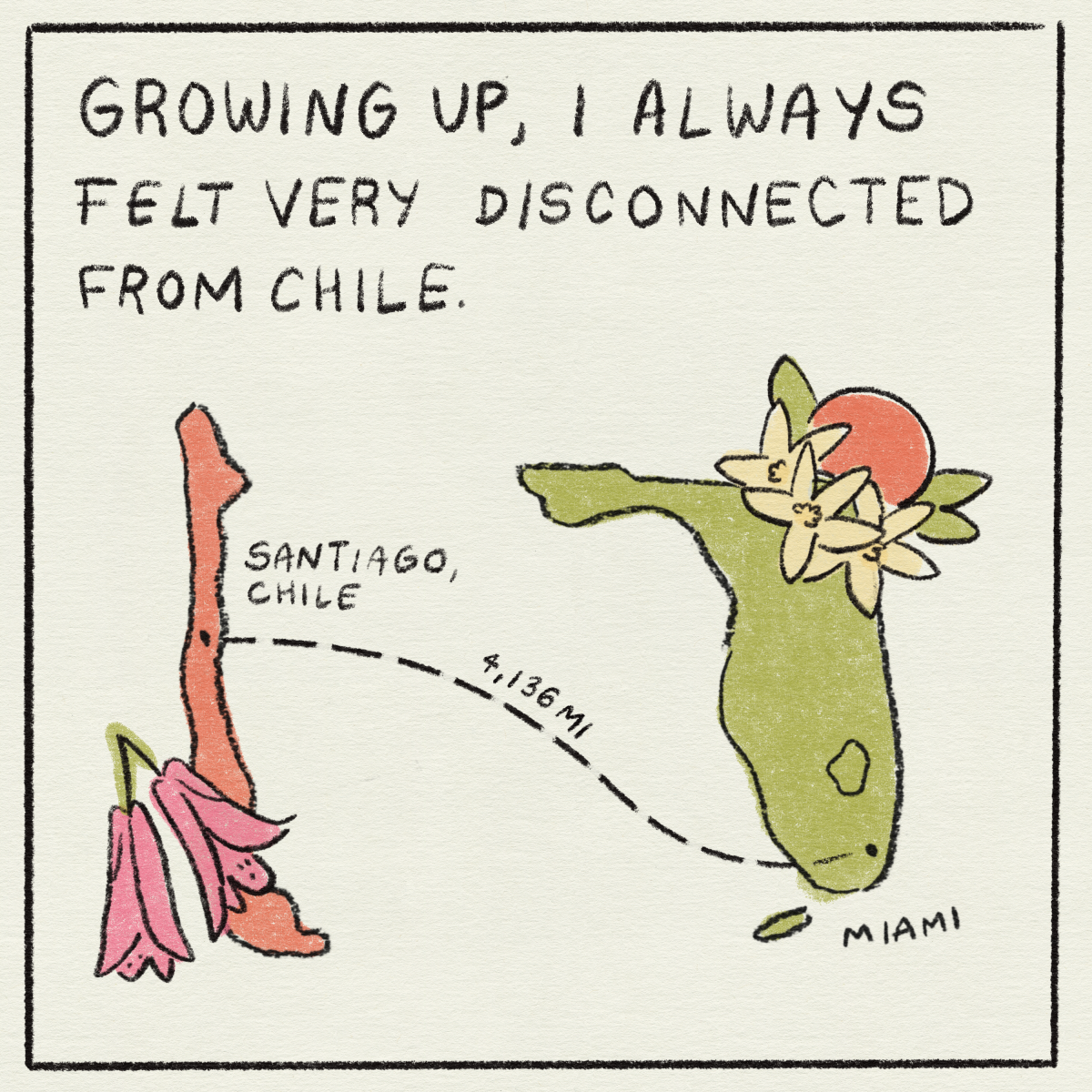

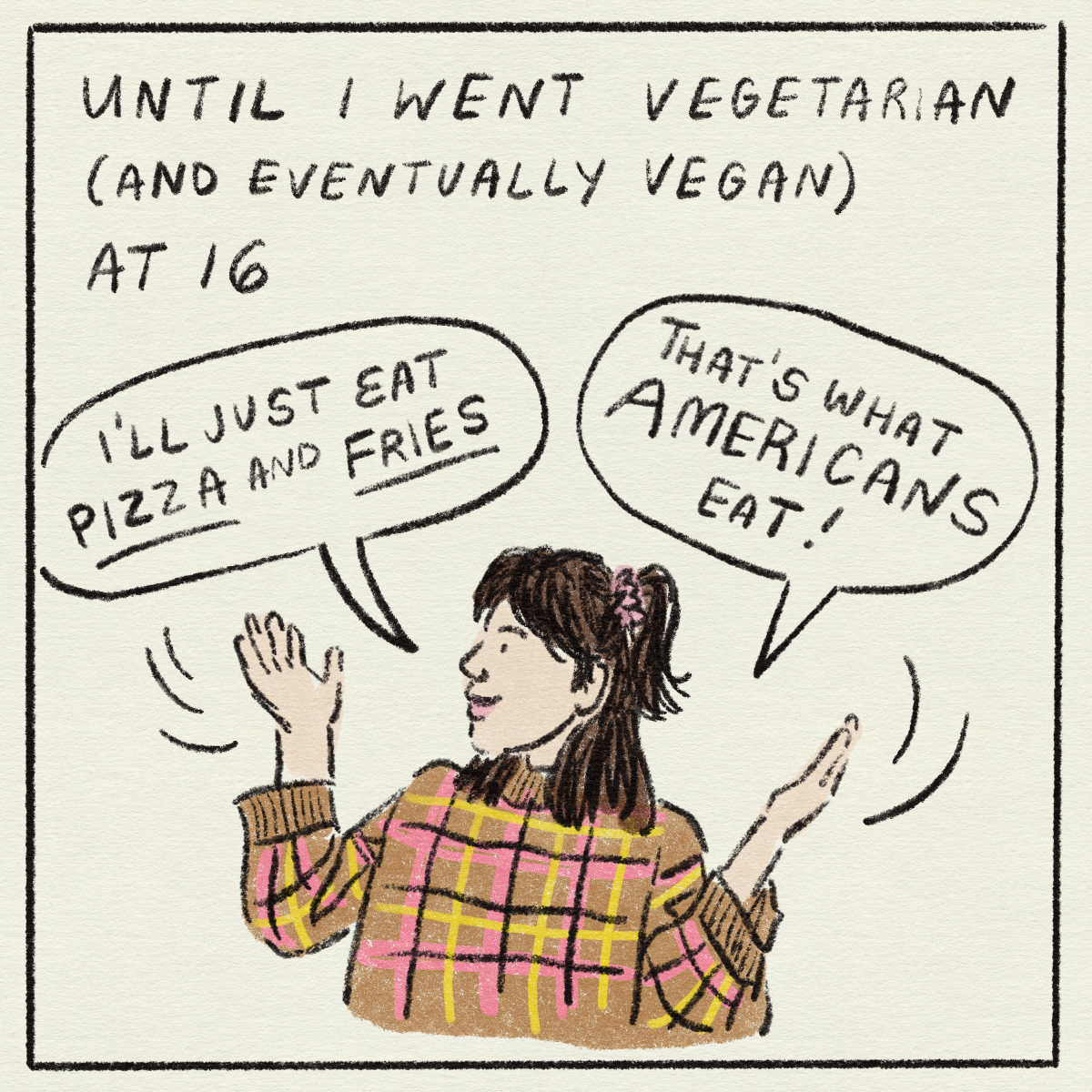
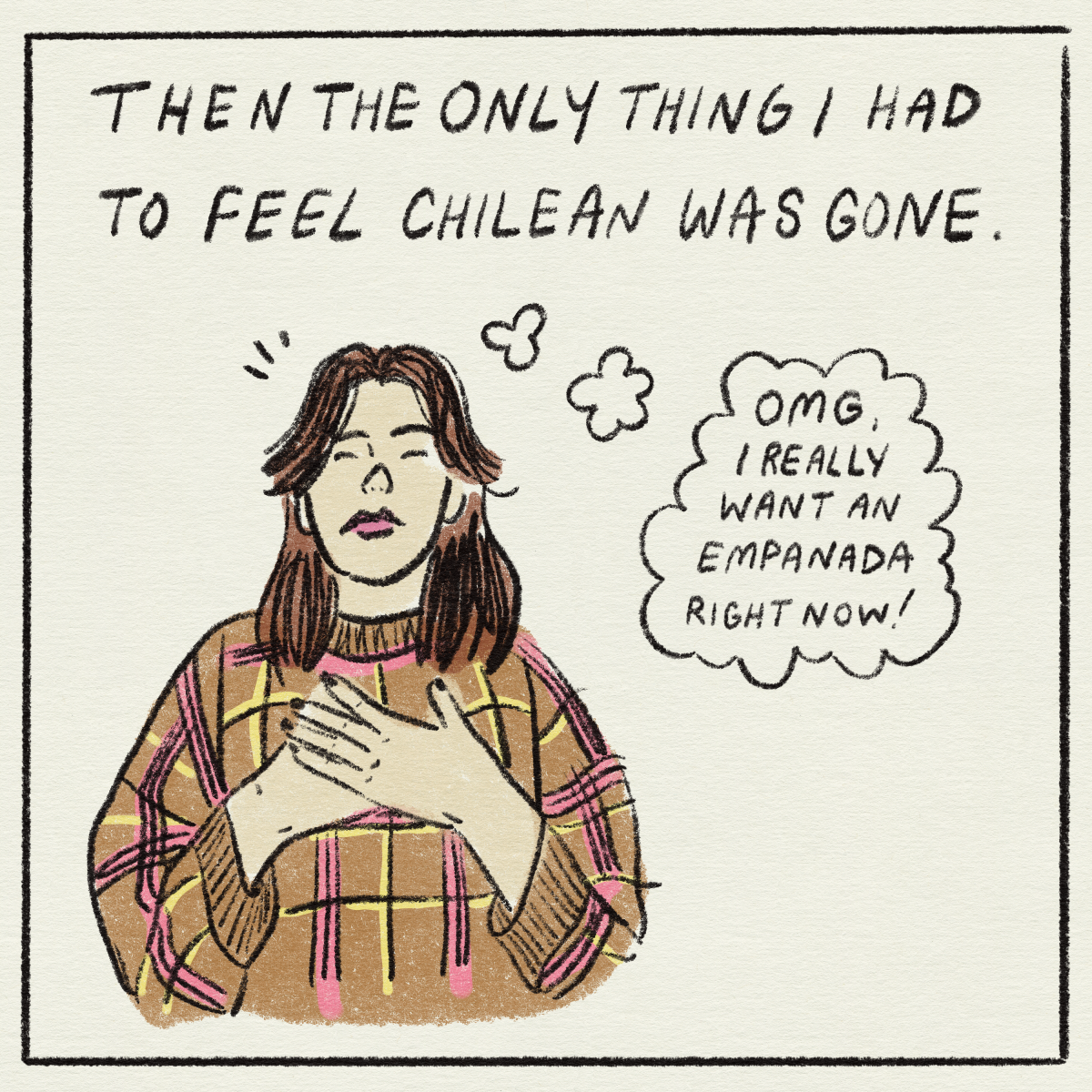

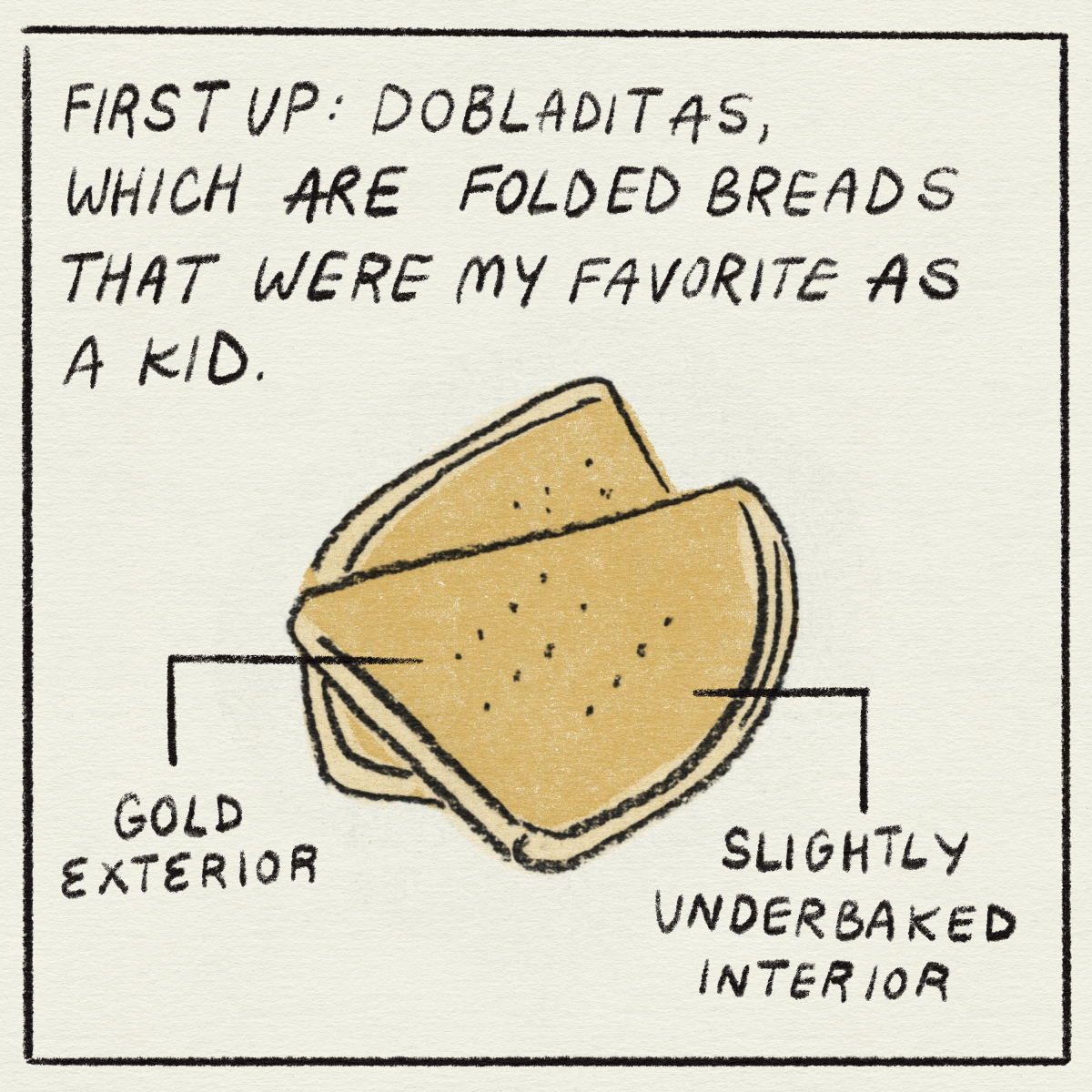


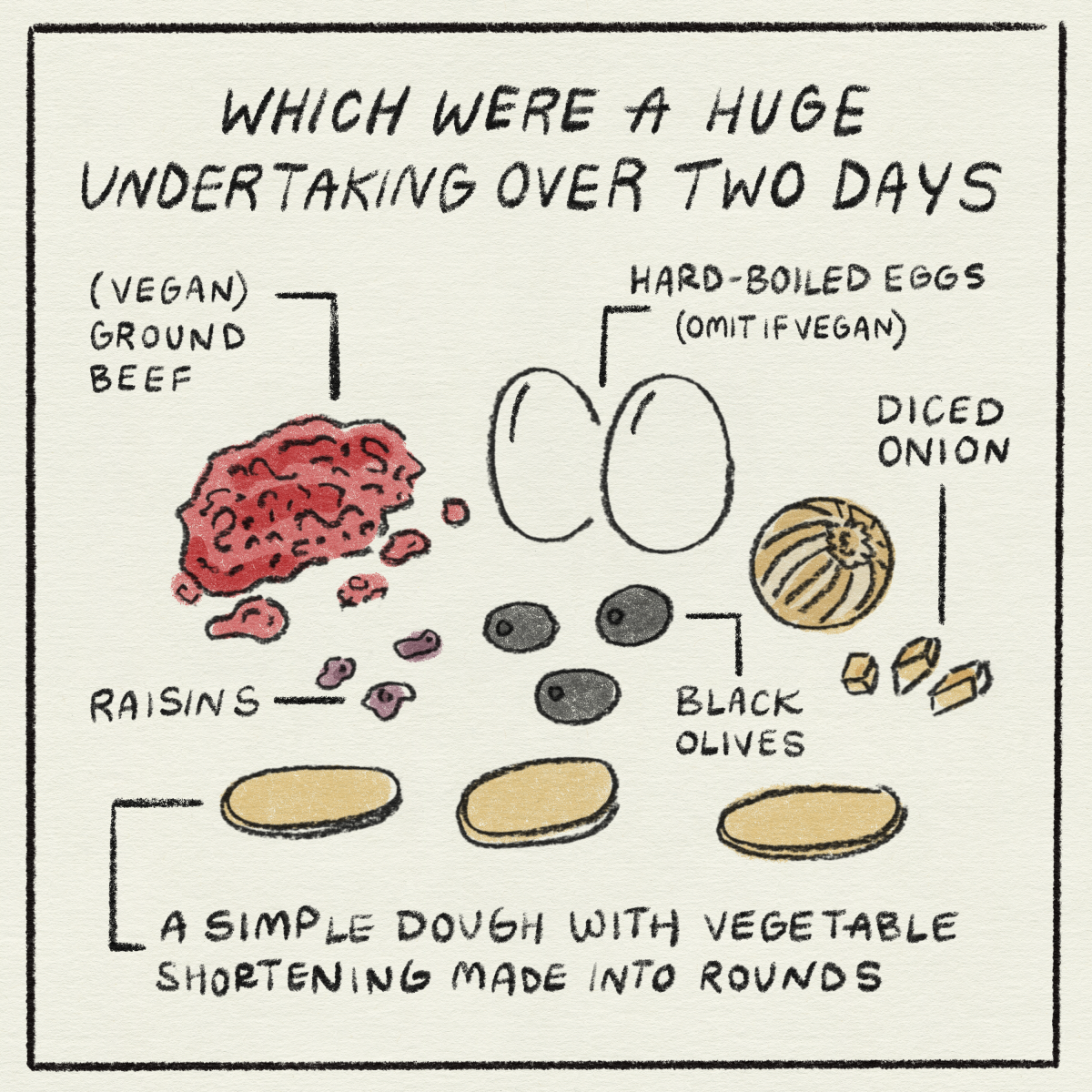

Recipes
Chilean dobladitas: This is my favorite recipe for dobladitas, which is a Chilean bread that’s folded twice to create four folds. These folds make for a bread with a slightly underbaked inside and golden exterior. This is a great bread for breakfast or teatime. If you’re interested in veganizing this recipe, just replace the butter with vegan butter and swap the egg wash for a 1:1 mixture of coconut oil and vegan plant milk.
Chilean hallullas: This is another traditional Chilean country bread that has a dense crumb and golden exterior. This style of bread is commonly eaten on its own or used in a variety of sandwiches, unlike the dobladita. For this recipe, just remember to use a vegan butter/margarine instead of a dairy margarine.
Chilean Empanadas de Pino: This is the most ambitious recipe of them all to veganize, but simply use your favorite vegan “ground beef” such as Beyond Meat or Impossible Burger Grounds for the base of the filling. Once you’re assembling your empanada, you can omit the hard-boiled egg or try to make one out of tofu — if you dare. Fill the empanada as instructed and once again swap out the egg wash for a 1:1 coconut oil and plant milk combination. Follow this video for a really good breakdown of the process.
Are you a Latinx artist? We want your help telling our stories. Send us your pitches for illustrations, comics, GIFs and more! Email our art director at martina.ibanezbaldor@latimes.com.
What The Times’ 1983 “Latinos” series can teach us about the value of diversity in the newsroom.
Hey folks. It’s Fidel again.
Yesterday I was a guest speaker at a college class called “Latinx Representation in Media, Films, and Pop Culture.” The focus of my talk was this newsletter, the atrocious lack of Latinx journalists in newsrooms across America and the groundbreaking 1983 “Latinos” series, a collection of 27 stories written, edited and photographed by an all-Mexican American team that dared to look at the Latinx community of Southern California as actual people. The following year, the series was awarded the Pulitzer Prize for Public Service, one of the highest honors in journalism.
The Latinx experience chronicled
Get the Latinx Files newsletter for stories that capture the multitudes within our communities.
You may occasionally receive promotional content from the Los Angeles Times.
I wanted to speak on “Latinos” because without it, the Latinx Files wouldn’t really exist. The work that this intrepid group did has been foundational and has given me a blueprint on how to cover a community so vast and diverse. Please, I know I’ve plugged the series before, but I implore you to read it if you haven’t. Though nearly 40 years have passed, “Latinos” still feels timely — a testament to the quality of the work but also to how little things have changed for Latinxs in that period.
In preparation for that class, I reread “The Pulitzer Long Shot,” a behind-the-scenes look at how “Latinos” came together, written by Frank O. Sotomayor, one of the co-editors and architects of the series. As Sotomayor tells it, The Times went on a hiring spree in the late ‘70s.
“The hiring burst helped form a critical mass of Latino staff members,” he wrote. “By 1983, we even had enough staff members to field a softball team, the Chicano Cubs.”
Consider subscribing to the Los Angeles Times
Your support helps us deliver the news that matters most. Become a subscriber.
Why am I telling you this? Because if it weren’t for the hiring of Latinx journalists, The Times would have one less Gold Medal to talk about.
The “Latinos” series proved beyond any reasonable doubt that our stories are not only worth telling, but they also win awards. It stands to reason then that if this newsroom — or any other, for that matter — wants more awards, hiring more Latinx journalists seems like a good approach.
An update on a past Latinx Files story: the Brownsville mural
Back in October, I wrote about a controversial mural that went up in the borderland city of Brownsville, Texas. The large scale Instagram background resulted in backlash for Mayor Trey Mendez, with critics pointing out the lack of transparency in the artist selection process — the BTX mural was painted by L.A. artist Teddy Kelly — and questioning whom this mural is for in the first place, since it was paid for by the Elon Musk Foundation. Musk’s Space X has a rocket launch site in nearby Boca Chica Beach (Stop trying to make “Starbase, Texas” happen, folks. You’re embarrassing yourselves), and he has encouraged his followers to relocate to Brownsville.
Last Thursday, Mendez posted on Facebook that someone had tagged the mural with “gentrified Stop SpaceX” and that local activist Rebekah Lynn Hinojosa had been arrested and charged with a Class B misdemeanor. Mendez also included Hinojosa’s mug shot and stated that she had been “quoted in several anti-SpaceX articles.” At some point between then and now, the Facebook post was edited to remove mention of Hinojosa’s past criticism of Musk’s company. In the comments, constituents and other Rio Grande Valley residents admonished Mendez for singling out Hinojosa. After all, the mayor had not previously posted mug shots of individuals arrested for a misdemeanor charge.
Gus Bova of the Texas Observer recently interviewed Hinojosa, who said four police officers showed up at her house, took her in without giving her a chance to change clothes and confiscated her glasses.
All this for a Class B misdemeanor.
“This is an extreme, targeted attack on Bekah,” said Mike Siegel, Hinojosa’s attorney.
But wait, there’s more. Mendez once again took to Facebook on Wednesday to post that he had asked for an investigation into Hinojosa’s arrest.
“If we see that any wrongful conduct occurred on the part of our police department, I will be the first to support the findings and recommendations resulting from that investigation and hold those invididuals [sic] accountable,” he wrote.
“Nobody is above the law. Our community should feel safe to exercise their right to free speech in a lawful manner.”
What’s happening in Brownsville has my attention for several reasons. The first and most obvious one is that I’m from the RGV (puro 956 cuh!), so of course I have to keep up with the local chisme.
But I also think it’s important to keep a mindful eye on a situation in which one of the world’s richest men moves to one of the poorest regions in the country. Talk about income inequality so vast it could fill the Gulf of Mexico. If this scenario isn’t ringing internal alarm bells for you, I’m not sure what will.
I’ll of course keep you updated if there are new developments.
Things we dug this week that we think you will dig.
— For the Washington Post, Latinx Files guest writer emeritus John Paul Brammer got all philosophical on why people are rooting for Hank the Tank, a 500-pound chonk of a black bear that has been roaming through South Lake Tahoe, Calif., like he owns the place. You know what? Maybe this ursine usurper does.
— Here’s a free idea for anyone trying to sell anything to Latinxs: Slap a flag on it. One thing most Latinxs have in common is their love for their family’s country of origin. This applies to everyone. Dominicans, Cubans, Puerto Ricans, Venezuelans, Mexicans. I don’t care. Put their flag on a product, and people will buy it up. If you were to come up to me and tried to sell a Mexican flag with a tinier, smaller Mexican flag in it, I’d instruct you to shut up and take my money.
So why has the National Basketball Assn. not put up for sale replicas of the Golden State Warriors jersey with the Mexican flag in the numbers that Juan Toscano-Anderson wore during the 2022 NBA Dunk Contest? And why has Nike not ad-bombed me with those kicks?
Congratulations to Toscano-Anderson for making it to the finals. He made his fellow Mexican Americans proud, though as the homie Rodrigo Nuñez quipped, he would have won the whole thing if he had dunked over a cactus while holding a serpent in one hand and the ball in the other.
Real missed opportunities all around.
— Speaking of sneakers, the Nike Cortez recently turned 50. For NPR, Sean Saldaña wrote the oral history of a shoe beloved by Forrest Gump and cholos alike. And in case you’re wondering, yes I do own a pair with the Mexican flag colorway.
— L.A. Times Houston bureau chief Molly Hennessy-Fiske went on The Times podcast to talk about efforts to preserve a segregated school house in Marfa, Texas, where students would be physically punished for speaking Spanish. In case you missed it, you can find Hennessy-Fiske’s story here.
—What I’m Reading: Xochitl Gonzalez’s debut novel “Olga Dies Dreaming.” Back in January, my colleague Dorany Pineda profiled Gonzalez. Both the book and the story are worth a read.
The Latinx experience chronicled
Get the Latinx Files newsletter for stories that capture the multitudes within our communities.
You may occasionally receive promotional content from the Los Angeles Times.







